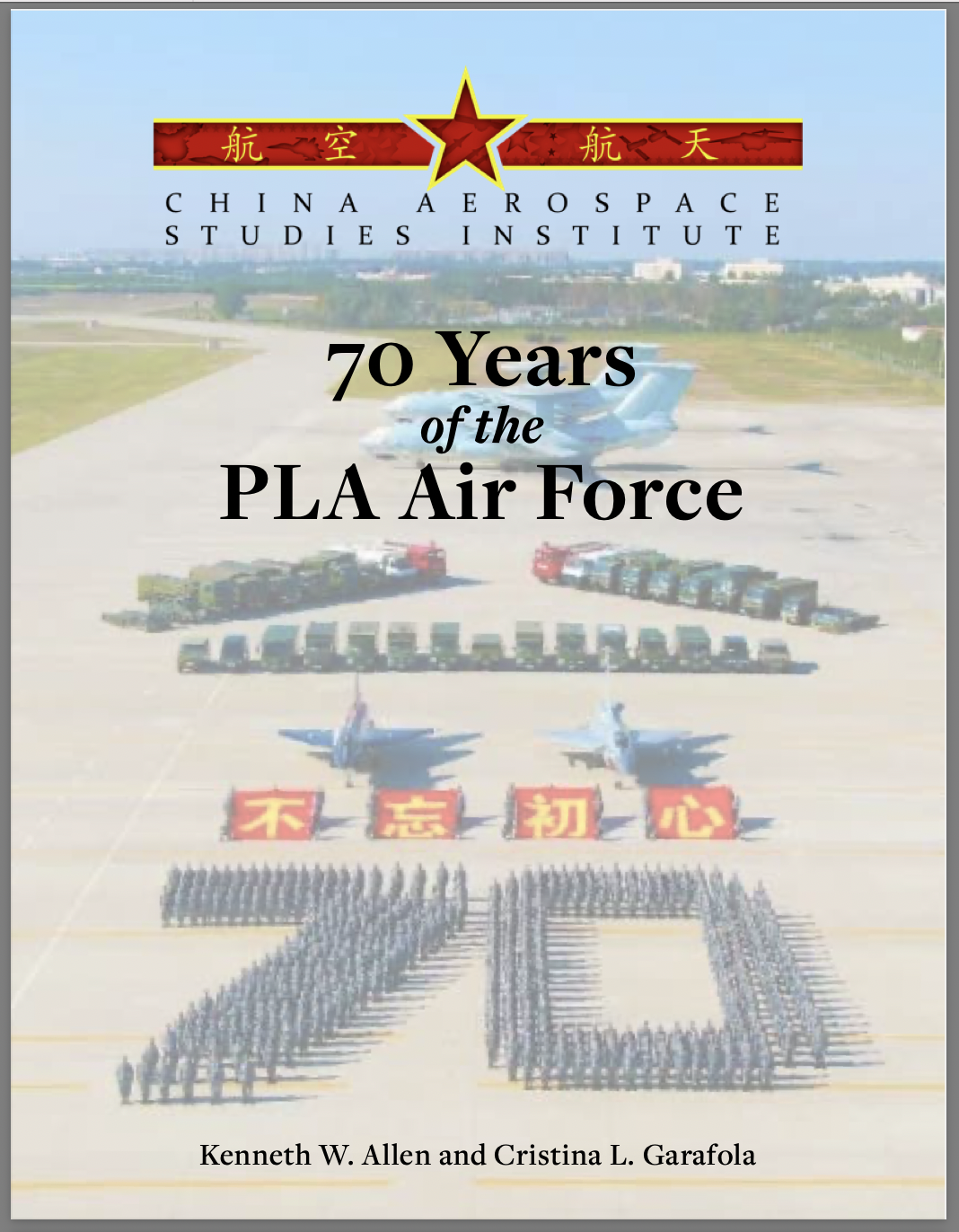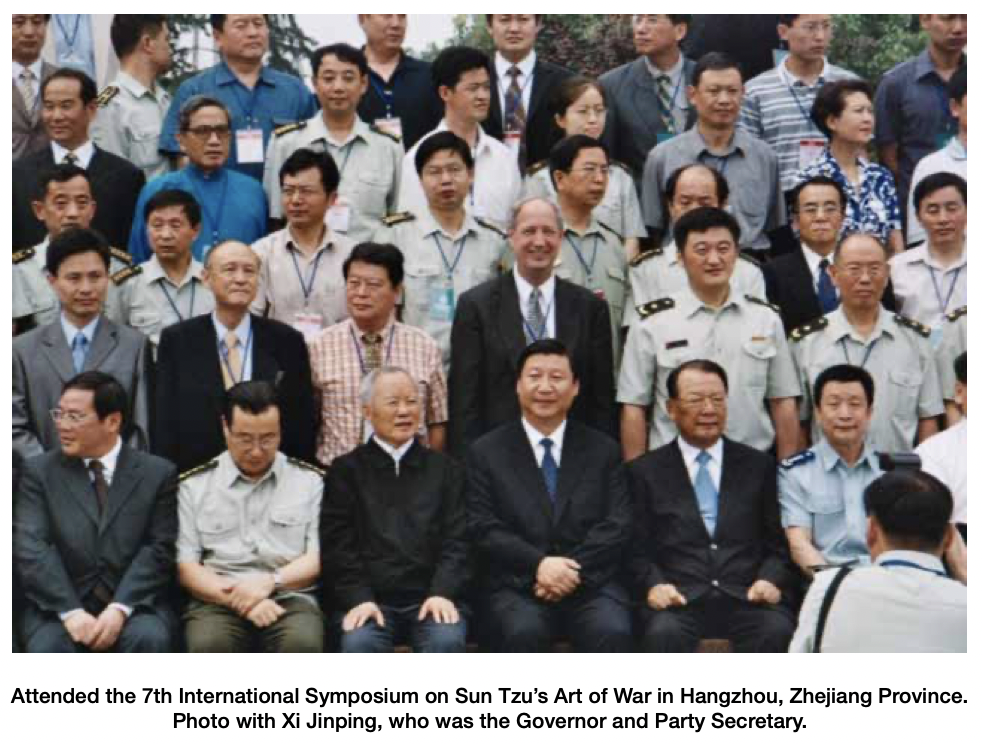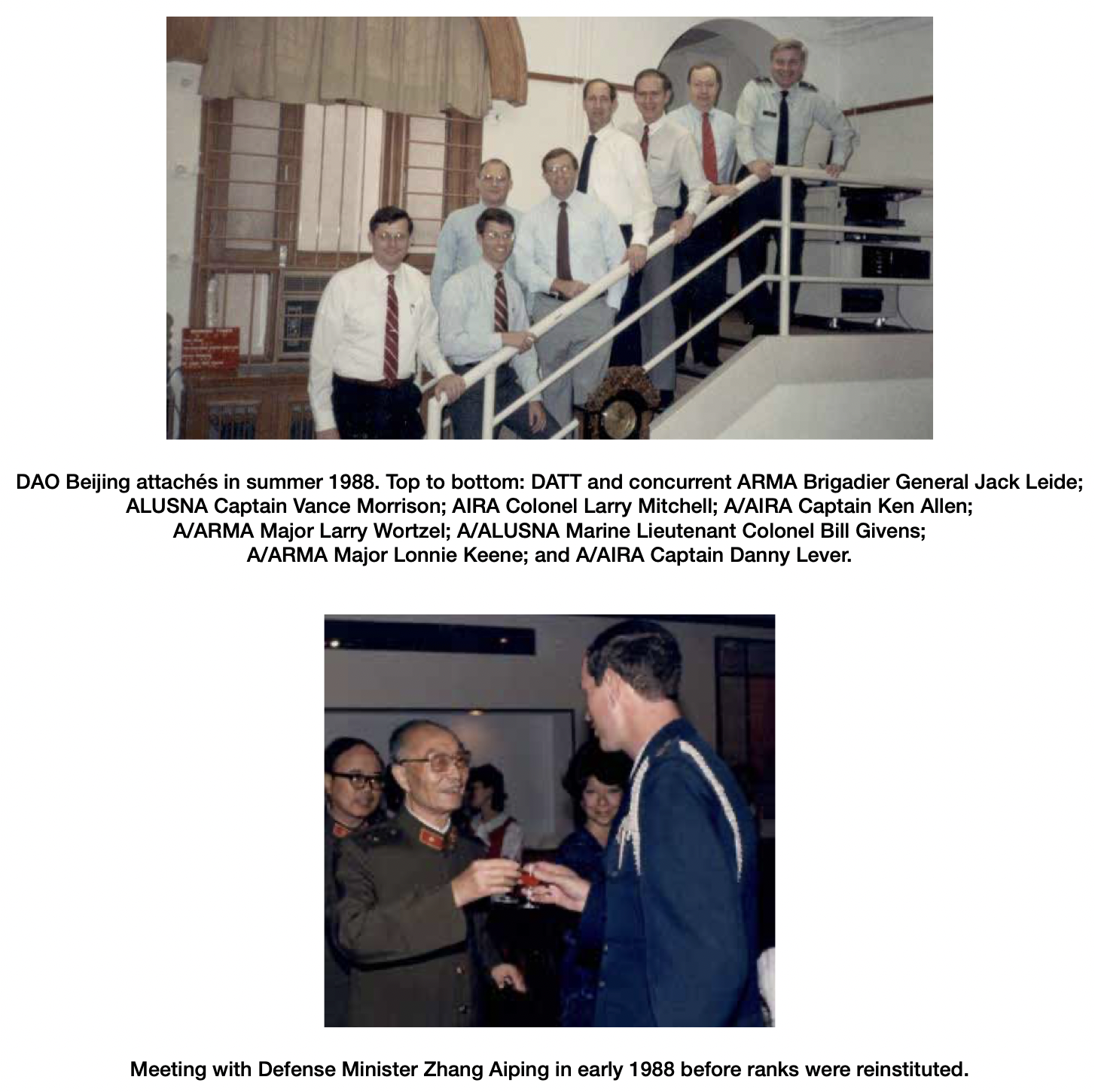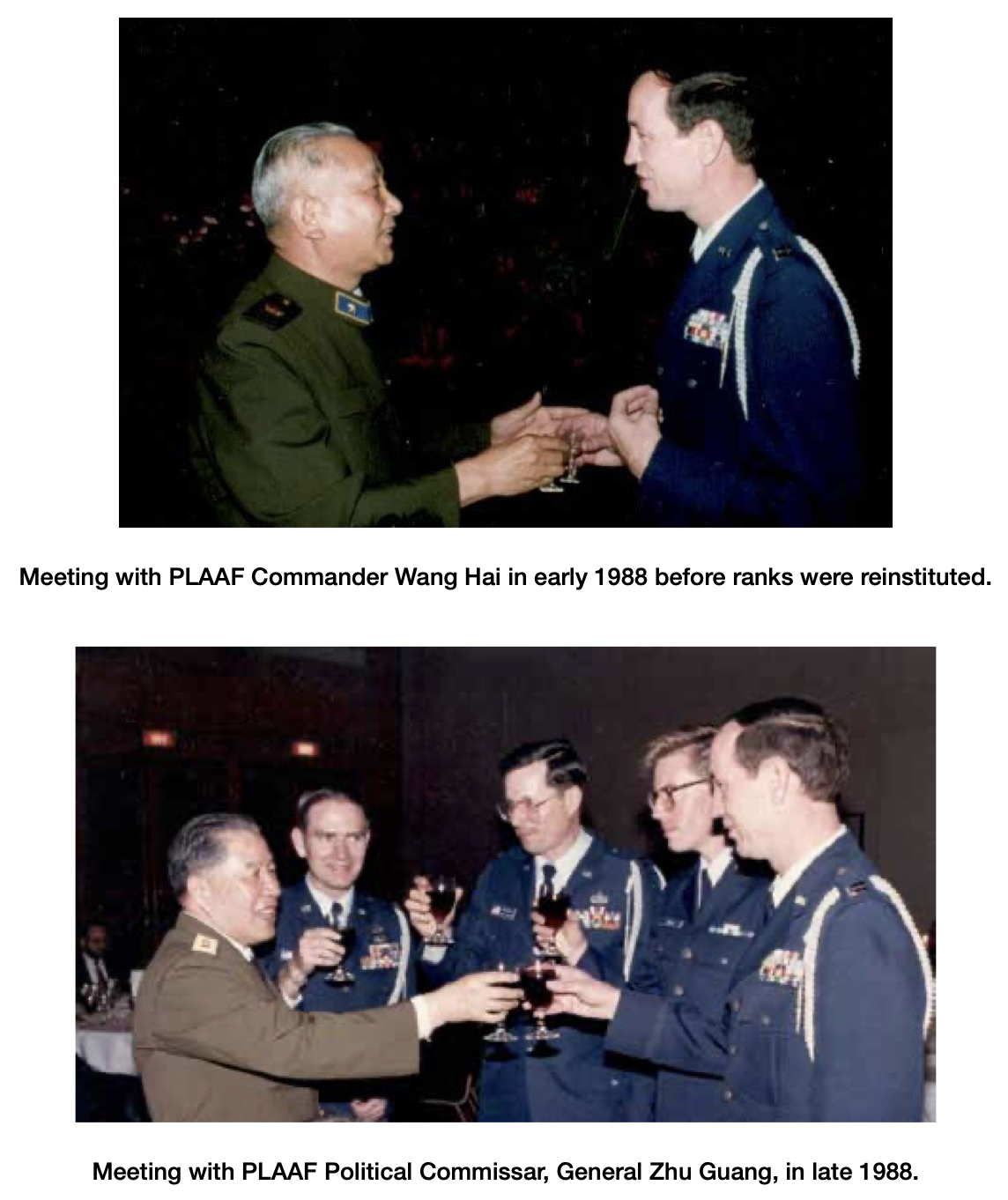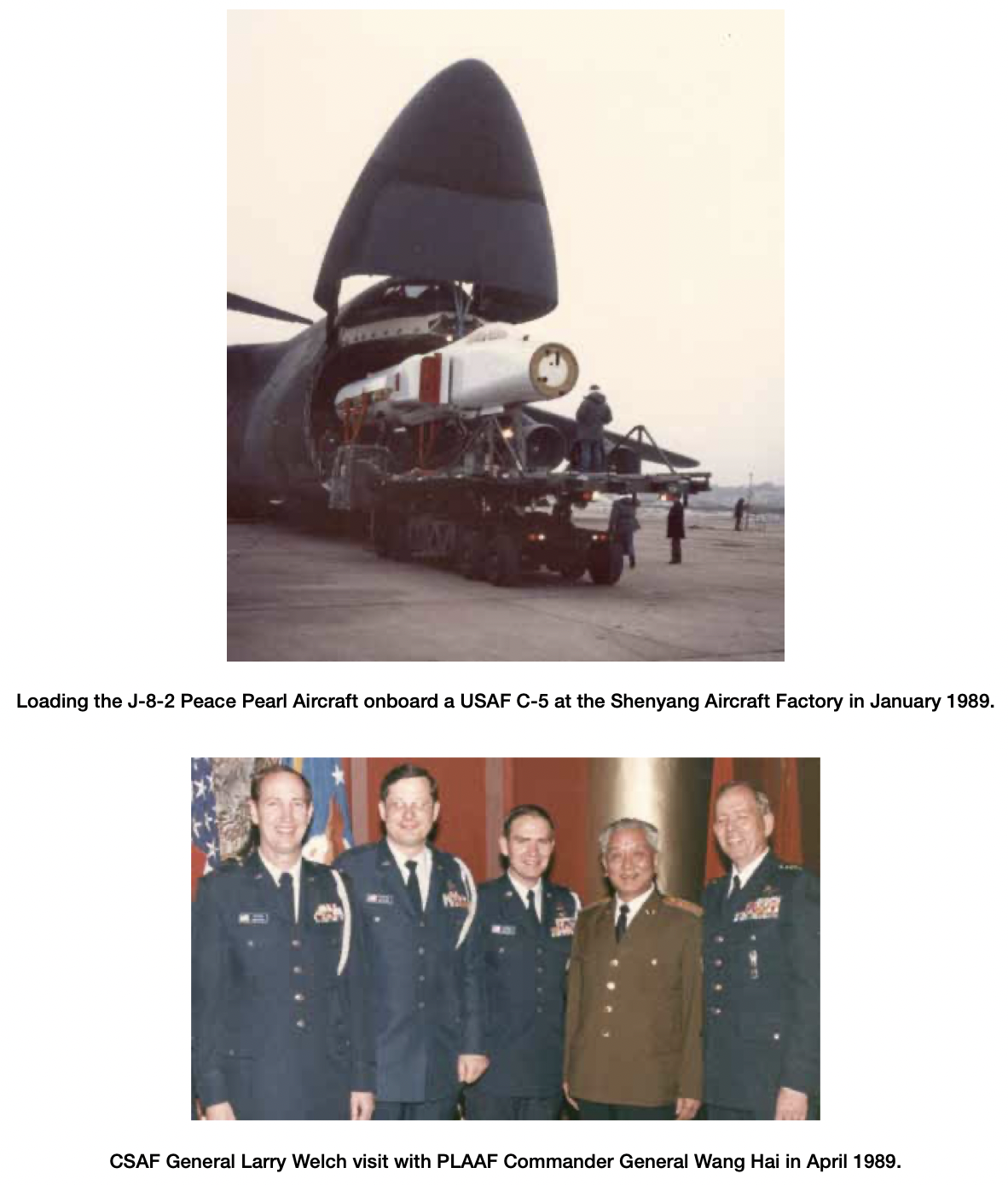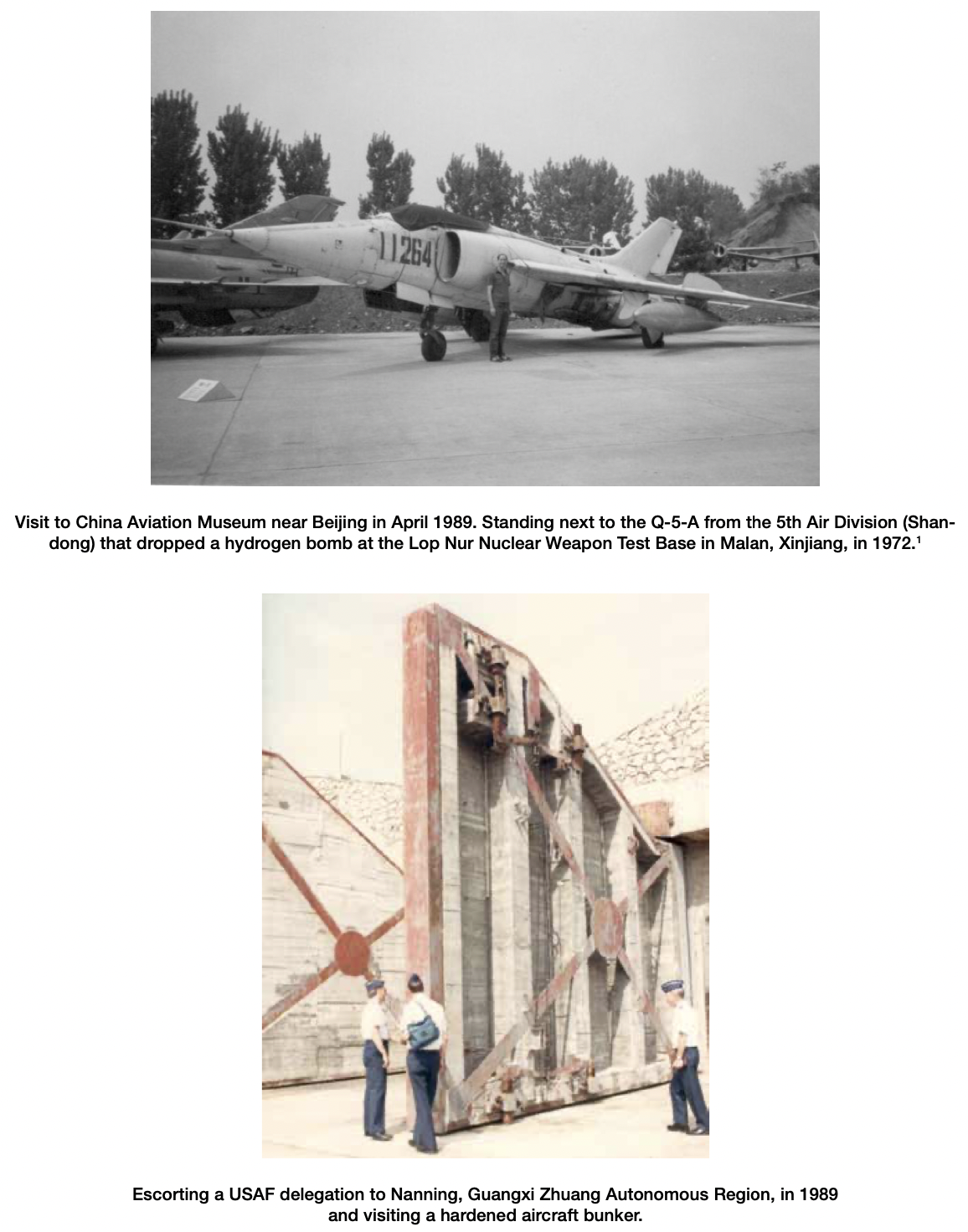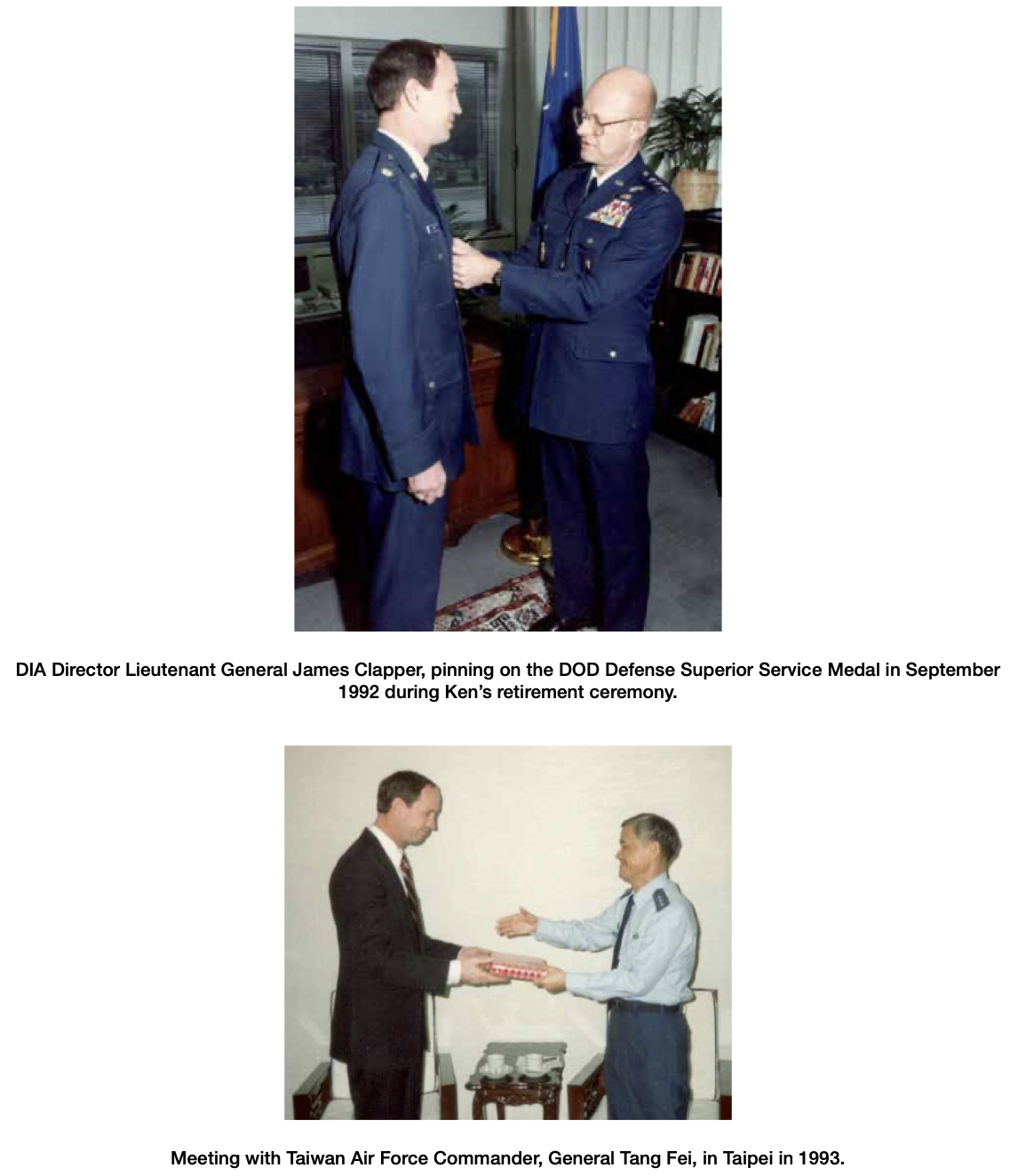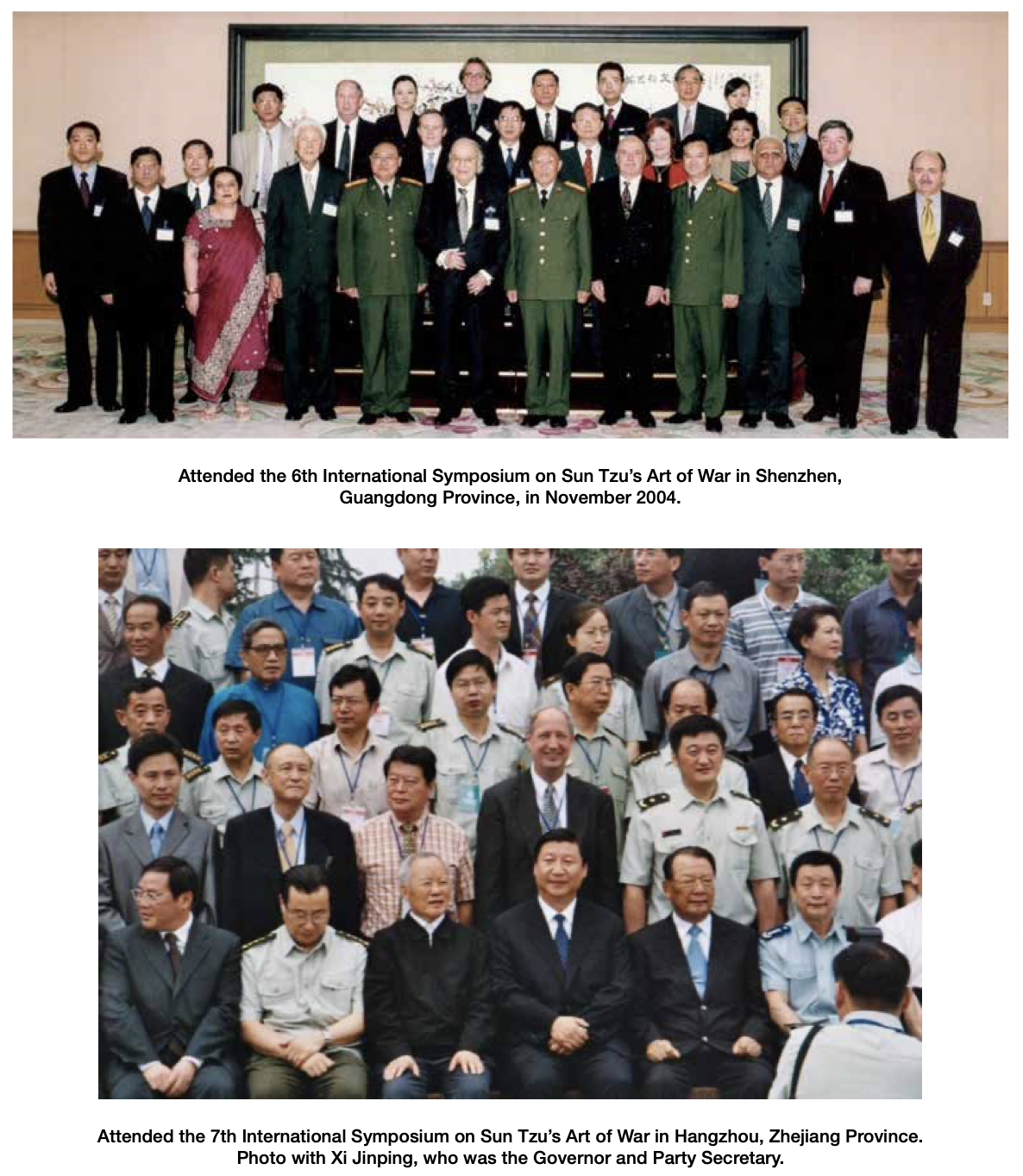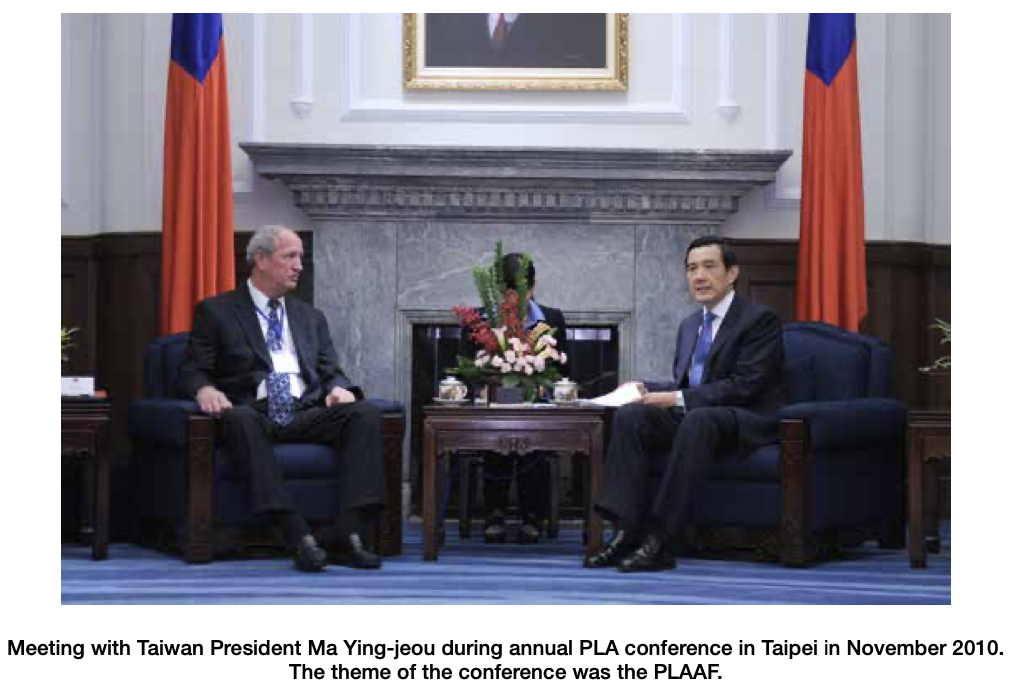An Unparalleled Reference! “70 Years of the People’s Liberation Army Air Force”
Just released: a landmark volume with 474 data-packed pages and 1,955 endnotes on the evolution of the People’s Liberation Army Air Force since its founding in 1949! Entitled “70 Years of the PLA Air Force,” this unique reference is published by the China Aerospace Studies Institute, based at Air University and National Defense University. There has never been anything like it before, nor will there ever be again…
The authors focus on six main areas: strategy and doctrine, organizational structure, personnel, education, training, and military diplomacy and exchanges. They conclude by exploring directions the PLAAF may pursue leading up to the 80th anniversary of its founding in 2029.
Kenneth W. Allen and Cristina L. Garafola, 70 Years of the People’s Liberation Army Air Force (Montgomery, AL: China Aerospace Studies Institute, 2021).
Click here to access a full-text PDF free of charge.
You can also access the book via Amazon.
This book provides a single unclassified source of information for those who have the opportunity to engage China’s People’s Liberation Army Air Force in military diplomacy either in China or in the U.S., and for anyone else who is looking at the PLAAF. It addresses the PLAAF organizational structure, personnel (officer/cadre corps and enlisted force), education, training, and military diplomacy. It presents not only a snapshot of where the PLAAF is today, but also how it got there from its inception in 1949. Throughout the book, you will come to understand the importance of the organizational structure of the PLA; and how and why this impacts its decision making, its command and control, its procurement, and how it would likely fight. As no one else can, Ken Allen concentrates on the details of the organization, and how each unit relates to others though the grade system, and then explains the big picture implications of those relationships. He also shows why it is important to understand the system, and what happens if and when it changes. His self-selected epitaph, legendary in the PLA studies field, is: “He taught them Grades and Ranks.” Cristina Garafola provides additional inputs vital to addressing the PLAAF’s strategy, theory, and doctrine.
ABOUT THE AUTHORS
Kenneth W. Allen
In November 2019, Ken Allen (USAF Major – Ret.) retired as the Research Director for the U.S. Air Force’s China Aerospace Studies Institute (CASI), where he served since May 2017. After retiring, he became an independent consultant. During 21 years in the U.S. Air Force (1971-1992), he served as an enlisted Chinese and Russian linguist and intelligence officer with tours in Taiwan (Shulinkou Air Station and special project at the U.S. Embassy Defense Attaché Office), Berlin, Japan (5th Air Force), PACAF Headquarters, China, and Washington DC (Instructor in the Defense Intelligence Agency’s Joint Military Attaché School). From 1987- 1989, he served as the Assistant Air Attaché in the U.S. Embassy in Beijing, where he received the Director of Central Intelligence’s Individual Exceptional Collector of the Year Award for 1988 and the Unit Exceptional Collector of the Year Award for 1989 (Tiananmen). He was inducted into DIA’s Defense Attaché System Hall of Fame in 1997. From 1992-2017, he worked for the US-Taiwan Business Council, the Henry L. Stimson Center, Litton TASC, the Center for Naval Analysis (CNA), Defense Group Inc. (DGI), and the Long Term Strategy Group (LTSG), as well as a consultant for RAND Corporations Project Air Force. During those 25 years, his primary focus was on China’s military organizational structure, personnel, education, training, and foreign relations with particular emphasis on the PLA Air Force. He has B.A. degrees from the University of California at Davis and the University of Maryland and an M.A. degree from Boston University. He has written multiple books, monographs, chapters, journal articles, and online articles on the PLA.
Cristina L. Garafola
Cristina Garafola is a Senior Policy Analyst at the RAND Corporation, where her research focuses on the ramifications of China’s rise for its global status, particularly with respect to defense issues, China’s influence on regional actors, and implications for the United States. Garafola served in the Office of the Secretary of Defense from 2017 to 2019, where she focused on National Defense Strategy and Indo-Pacific strategy implementation. She has also worked at the Department of the Treasury, the Center for Strategic and International Studies, and the Department of State. Her work has been published by RAND and in Asian Security, the Journal of Strategic Studies, War on the Rocks, and the Jamestown Foundation’s China Brief. Garafola holds an M.A. in China studies from the Johns Hopkins School of Advanced International Studies (SAIS), a graduate certificate from the Hopkins-Nanjing Center for Chinese and American Studies, and a B.A. in international relations and Chinese from Hamilton College. She has experience living and working in China and speaks Mandarin Chinese.
PREFACE
Dr. Brendan S. Mulvaney, Director, China Aerospace Studies Institute:
For those of you who have the privilege of knowing the great Ken Allen, this book will come as no surprise. For those of you who don’t know Ken personally, trust me when I say he has dedicated his life to the study of the People’s Liberation Army’s Air Force (PLAAF). In many cases, such a statement would be hyperbole, in this case it is the flat honest truth. And if you have any doubt at all, just ask someone who knows him. He spends nights and weekends pouring over material in Mandarin, he spends his waking hours working on all manner of projects, and I can’t tell you how many times he has woken up in the middle of the night with an idea or a way to improve a report because, and I kid you not, he works on the PLAAF in his sleep. The China Aerospace Studies Institute (CASI) has the largest library of native language publications related to the PLAAF in the Department of Defense, and it is just part of the massive collection that Ken has personally amassed over six decades. Yes, more than half a century of reading PLA newspapers, countless hours in drab state bookstores thumbing through books to determine which ones were significant, and watching more hours of Chinese Central Television’s military channel than most people in China. He is perhaps the only person in the entire world who has every copy of the PLA Air Force Journal, from day one. And he has read them all.
Ken’s contribution to the study of the PLA Air Force, and to the PLA more generally, cannot be overstated. From his start as an enlisted airman in Taiwan, to serving in Beijing as an attaché during the Tiananmen Square incident, and through the decades that followed, Ken has stayed focused on learning all that he can about the PLA Air Force, and probably more importantly he has tried to teach countless others about them as well. This is the mark of a true professional, never one to play “I know something you don’t know”, he has taken scores of young officers and analysts under his wing, he has mentored mid- and senior-level leaders, and he single handedly started the China Attaché Roundtable to help our military attaches going to Beijing, Hong Kong, Taipei, and across Asia, learn about China and the PLA. Again, as evidenced by the endorsements, his contributions are broad and wide ranging, and he as done all of it as a selfless leader.
Originally, the book was to have the subtitle: “An Overview of Strategy, Organization, Personnel, Education, Training, Military Diplomacy, and Prospects for the Future”, but that just seems unwieldy. Those who are familiar with Ken’s work know full well that he doesn’t “do” hardware, and true to form you will find very little about planes in this book. That is by design. There are plenty of other resources out there if you are interested in the hardware side of things, some even that CASI has published, but precious little out there on these topics. And while Ken has his feelings about ‘doctrine’, Cristina has picked up that ball and run with it. She does a great job complimenting Ken’s work, and draws on her deep background to bring out the important topics that need further explanation. She has done a terrific job, not just on her specialty of doctrine and strategy, but throughout the book and throughout the process of adding depth and explanation as needed. All of the work is meticulously documented, almost exclusively from Mandarin language sources, as the two thousand endnotes will attest.
Throughout the book, you will come to understand the importance of the organizational structure of the PLA, and how and why it impacts their decision making, their command and control, their procurement, and likely how they will fight. Like no one else can, Ken concentrates on the details of the organization, and how each unit relates to others though the grade system, and then explains what the big picture implications of those relationships are. He also shows why it is important to understand the system, and what happens if and when it changes. His self-selected epitaph is: “He taught them Grades and Ranks.”
This really is his Magnum Opus, a comprehensive look at the ‘software’ of the PLAAF across its full history. It isn’t meant to be read from cover to cover; each reader will find something for them, and something they will continue to come back and reference time and time again. Everyone who studies the PLA and its Air Force should keep a copy of this work on hand as a ready reference.
ENDORSEMENTS
General Larry D. Welch, U.S. Air Force (Ret.)
12th Chief of Staff, United States Air Force
Former President and CEO, Institute for Defense Analyses
Ken Allen’s almost 50 years of concentration on Asia, China, with much of that time specifically on the PLA and PLAAF gives him a level of insight that is invaluable in virtually every aspect of engagement with the PLA and PLAAF. Since my first experience with Ken during my PLAAF hosted visit to China in April 1989 until the current time, I have found the depth and breadth of his understanding of the PLA and the PLAAF to be invaluable. His ability to communicate that understanding is evident in a wide range of books, monograms, articles, and in conference and workshops. I relied on that understanding for help and advice in addressing relevant issues during the late years of my service with the Air Force and subsequent 20 years at the Institute for Defense Analyses. I strongly recommend this book to anyone engaging with the PLAAF.
Admiral Dennis C. Blair, U.S. Navy (Ret.)
Former Commander-in-Chief, U.S. Pacific Command Former Director of National Intelligence
All of us who have had senior responsibilities for military relations with China have relied for many years on Ken Allen. He knows more about the People’s Liberation Army Air Force than anyone outside China, and more than most Chinese airmen. His judgements of the development of the Chinese Air Force have always been based on facts, grounded in historical knowledge, practical and insightful. This book, bringing to bear all of Ken’s decades of observing the PLAAF, reading its literature and thinking about it, is a tremendous service to the United States. It will have a prominent place on my shelf of books about the Chinese Armed Forces and will soon be dog-eared from constant reference.
Ambassador Charles W. (Chas) Freeman, (USFS, Ret.)
Former Assistant Secretary of Defense for International Security, 1993-1994 Former Deputy Chief of Mission, Beijing, 1981-1984
Former Director, Chinese Affairs, U.S. State Department, 1979-1981
知己知彼百战百胜, “By knowing yourself and knowing your adversary you can emerge victorious from every battle.” So said Sunzi. There is no American more meticulous in the effort to know the People’s Liberation Army Air Force (PLAAF) than Ken Allen. He and Cristina Garafola have now produced an English-language profile of the PLAAF that will not be bettered. Their book provides a key not just to possible U.S. conflict with China but also to future cooperation with its expanding air power, when and if that is appropriate. Those who need to know, now have an aid to knowing.
Lieutenant General James R. Clapper, U.S. Air Force (Ret.)
Former Director of National Intelligence
Former Undersecretary of Defense, Department of Defense Former Director, National Geospatial-Intelligence Agency Former Director, Defense Intelligence Agency
I have known Ken Allen for over three decades, and I consider him the premier authority on the subject of China and the PLA in general, and the PLA Air Force specifically. I once traveled in China with Ken and can attest to his extensive knowledge and insight of the history, organization, training, acquisition, operation, tactics and doctrine of the PLA and the PLA Air Force. His fluency in Mandarin afforded him a tremendous advantage in engaging with Chinese counterparts who would open up in ways they wouldn’t otherwise do with someone less fluent. He has devoted a lifetime to this subject and has both unmatched subject matter expertise as well as a consuming passion for it. He is a noted author on the subject having published numerous papers, articles, and monographs, and a sought-after speaker on the topic. Ken is widely recognized in both intelligence and operational circles for his expertise, and his innate ability to impart his knowledge to the non-expert. I would consider his book a must-read for anyone who deals with the Chinese and its military components, and of great interest to anyone simply wanting to gain a better understanding of China and its military capabilities.
Lieutenant General Ralph J. Jodice II, U.S. Air Force (Ret.)
Former Defense Attaché, Beijing, 2004-2007
NATO Senior Mentor, 2015-2020
In 2003, I was designated as the next Defense Attaché in Beijing with a start date of November 2004. On his own initiative in the fall of 2003, Ken Allen started the attaché roundtable to ensure I, and my fellow attaché designates, would be better prepared to work in China and more importantly, to work with the PLA. Ken’s dedication, commitment, and comprehensive understanding of the PLA and PLAAF allowed us to begin our attaché duties on day one at a much higher level. For 16 years until his retirement in late 2019, Ken continued to host the attaché roundtable and passed along his well-researched insights and analysis to over 100 attaché and liaison designates going to Beijing, Hong Kong, and Taipei. Ken’s book is a MUST read for all attachés headed to China. Additionally, it should be at the fingertips of all attachés headed to the East Asian area as well as other diplomats. Ken’s book serves as a legacy to his over 50 years of PLA and PLAAF expertise and will mentor both attachés and diplomats alike. Thank you Ken… as always, very well done!
Lieutenant General Charles W. “Hoop” Hooper, U.S. Army (Ret.)
Former Director, Defense Security Cooperation Agency
Former Deputy Director for Strategy, Plans and Policy, U.S. INDOPACOM
Former Defense Attaché, Beijing, 2007-2009
Former Senior Director for China, Taiwan and Mongolia, Office of the Secretary of Defense
I first met Ken Allen in Beijing in August 1989 when I was a young Army FAO language student. He was already a legendary military attaché; known widely within the greater “China Hands” government and academic community for his expertise on the People’s Liberation Army Air Force (PLAAF). For over 30 years, Ken was the “go to” person, for me and many others, for insight into the PLAAF. As U.S. Defense Attaché to Beijing, Deputy Director of Strategy for U.S. INDOPACOM and DSCA Director, when asked for information about the PLAAF, my answer was always the same; “Go talk to Ken Allen.” What sets Ken’s research apart from his peers is his holistic approach focused not only on aircraft but also PLAAF organization, education, institutional culture, and talent management. Kudos as well to Cristina Garafola for her significant and insightful contribution. This book will serve as the definitive source for information on the PLAAF for years to come.
Lieutenant General David A. Deptula, U.S. Air Force (Ret.)
Dean, Mitchell Institute for Aerospace Studies Former Deputy Chief of Staff for ISR, HQ USAF
I have known Ken Allen since 2006 when I became the first chief of intelligence, surveillance, and reconnaissance (ISR) at HQ U.S. Air Force (USAF). He and I were key participants in the 2010 CAPS-RAND-NDU PLA conference in Taipei, which resulted in a book entitled The Chinese Air Force: Evolving Concepts, Roles and Capabilities. Ken wrote the chapter on “The Organizational Structure of the PLA Air Force.” It was used by the USAF Chief of Staff and Chief Master Sergeant of the USAF during their visit to China in 2013. Since the book was published, Ken has continued to write on the key themes in this book: strategy, organizational structure, personnel, education, training, and military diplomacy. The book yields real insight into what makes the PLA Air Force (PLAAF) tick, leaving weapon system details to others. This book is a “must read” as a foundation for understanding how the PLAAF got to where it is today and where it is going in the future.
Lieutenant General Wallace “Chip” Gregson, U.S. Marine Corps (Ret.)
Former Commander Marine Corps Forces Pacific
Former Assistant Secretary of Defense for Asian and Pacific Security Affairs
The character of a service formed by its heritage. The politics, economy, and the nature of its government reveal much about how it may be employed in peacetime competition and conflict. The PLAAF is not like other air forces. Chairman Xi’s pursuit of the great rejuvenation of the Chinese nation and his military transformation provide both the purpose and the means to enrich China’s power projection capability for gray zone coercion and conflict. The PLAAF is a key component of China’s power projection. Distinguished China analysts Ken Allen and Cristina Garafola provide a fulsome, detailed, and well-documented all-aspect analysis of the PLA Air Force on its 70th anniversary. They unlock the inner workings and hidden mechanisms that form its character and how it will operate. It will be a key reference for both security generalists and China specialists.
Brigadier General William B. Webb, U.S. Air Force (Ret.)
Former Defense and Air Attaché, Beijing, 1979-1982
Former President United Technologies China, Beijing 1986-1992
I have known and worked with Ken Allen for four decades. He was part of our initial cadre as attachés to China. He is a priceless asset as a professional analyst with direct contact to Chinese and interaction with them over many years. His fluency in the Mandarin language is exceptional as are his broad range of contacts in the Chinese Air Force and among China specialists. Through his analysis he has offered an understanding of the combat capabilities of the PLAAF that goes far beyond equipment, maintenance, and logistics and which has benefited our senior leaders and policy makers. Those who seek a full understanding of the PLAAF operational capability should seek his counsel. I would choose him above all others for his deep analytical understanding on the subject.
Brigadier General David R. Stilwell, U.S. Air Force (Ret.)
Assistant Secretary of State, Bureau of East Asia and Pacific Affairs
Former Defense Attaché, Beijing, 2011-2013
Since 1988, I have been the beneficiary of Ken Allen’s friendship and comprehensive understanding of the PRC, the PLA, and particularly the PLAAF. I used his advice on engaging PLA officers to great effect during my time as Defense Attaché in the PRC and ever since. NOBODY has done more to advance American understanding of the PLA and the PLA Air Force than Ken Allen.
Brigadier General Neal Sealock, U.S. Army (Ret.)
Former Defense Attaché, Beijing, 2000-2002
Ken Allen and I first met on my initial trip to Beijing in 1988 as the China Country Officer for DIA. We have shared many thoughts, challenges, victories and failures, and after action reports, thereby establishing a kindred spirit of thought concerning how to look at the PLA and PLAAF in particular. Rather than look solely at equipment and metrics, Ken approaches the complex nature of the development and professionalization of the PLAAF in a most comprehensive manner. This book, written by the “oracle” of knowledge on the PLAAF, is the result of his steadfast commitment to “seeking truth through facts.” Ken Allen epitomizes the profession of the military attaché and offers his best insights to approach the responsibilities of the job in the best possible manner. A must read for all interested in China and the PLA!
Rear Admiral Thomas Henderschedt, U.S. Navy
Senior Defense Official/Defense Attaché, Beijing, 2020-
Naval Attaché, Beijing, 2016-2020
Navy Liaison and Deputy Chief, Liaison Affairs Section, American Institute Taiwan, Taipei, 2014-2016
Assistant Naval Attaché, Beijing, 2006-2009
Ken Allen is THE dean of the China attaché community. Having trained decades of China attachés, Ken’s mark on the Department of Defense, and every attaché assigned to Beijing for decades, is undeniable. Ken’s counsel on the workings of the People’s Liberation Army as well as how to engage our Chinese hosts is an invaluable resource, and has shaped every U.S. military officer assigned to the Embassy in Beijing. Ken’s encyclopedic knowledge of the PLA and the People’s Liberation Army Air Force also have ensured that his perspectives, analysis, and deep penetrating understanding remain the highest value to the U.S. Intelligence Community. There is not a person in the military China community in the United States who has not directly benefited from Ken’s work. Cristina Garafola is one of the many analysts Ken has mentored throughout the decades, and her writings on the PLAAF, informed by her time spent in OSD Policy over the past several years, are a valuable contribution to this book. In short, anything Ken produces becomes the seminal work on the subject!
Thomas J. Christensen
Professor and Director of the China and the World Programs, Columbia University
Former Deputy Assistant Secretary of State for East Asian and Pacific Affairs
Ken Allen has long been America’s leading expert on the PLA Air Force (PLAAF). He and his co-author, Cristina Garafola, have produced a very valuable book that covers the entire history of the PLAAF, its sometimes tumultuous evolution as an organization under Chinese Communist Party (CCP) rule, and its more recent transformation into a modern fighting force that, alongside other military services, contributes to China’s ability to project military power abroad. The book will be of great interest to those studying security affairs in East Asia as well as those studying the domestic political evolution of the People’s Republic of China.
M. Taylor Fravel
Arthur and Ruth Sloan Professor of Political Science
Director, Security Studies Program, Massachusetts Institute of Technology
This book will quickly become the definitive guide to understanding China’s Air Force. Allen and Garafola deftly survey the evolution of the PLAAF from strategy and organization to personnel and training. Anyone interested in China’s military modernization should read this book. It is an instant classic.
Colonel Laurence W. Mitchell III, U.S. Air Force (Ret.)
Former Air Attaché, USDAO Beijing, 1988-1990
1988-1990 were years of intense activity for the officers, warrants, enlisted and civilian personnel serving in the U.S Defense Attaché Office in Beijing, China (USDAO Beijing). Through mid-1989 this frenetic activity was focused on a constant stream of high level visits by senior U.S. and Chinese defense and military officials to and from China, and a blizzard of working level visits into and out of China attending to ongoing military exchange, technology transfer and Foreign Military Sales (FMS) programs. In the wake of the Chinese crackdown in Tiananmen Square in June 1989, the bilateral politico-military relationship did an abrupt about face and entered what could be described as a Cold War environment. During this two year period, USDAO Beijing had the great fortune to have assigned some of the U.S. military’s very finest China-trained and experienced area specialist officers. Ken Allen was one of this group, and he distinguished himself then, as he continues to do now. Ken has never operated at the superficial level: in his research and his writings on the PLA’s and the PLA Air Force’s organizational structure and personnel he seeks to understand—and then convey—the structure and true capability of the force based on all its underpinning strengths and weaknesses. In short, do numbers of modern pieces of hardware or new combat systems equate to combat strength and capability? Ken seeks to answer such questions for the reader on the basis of intensely researched background undertaken over decades, largely based on primary sources which are only accessible to those few with the necessary expertise and high order language skills. His work also serves to provide the methodology for such study and determination into the future by others. However, at this point I must highlight a great concern I have about Ken’s exhaustive work. That concern (and personal worry) is that there will be far more attention paid to it outside the United States than by those in our own country! I hope I’m proven wrong.

